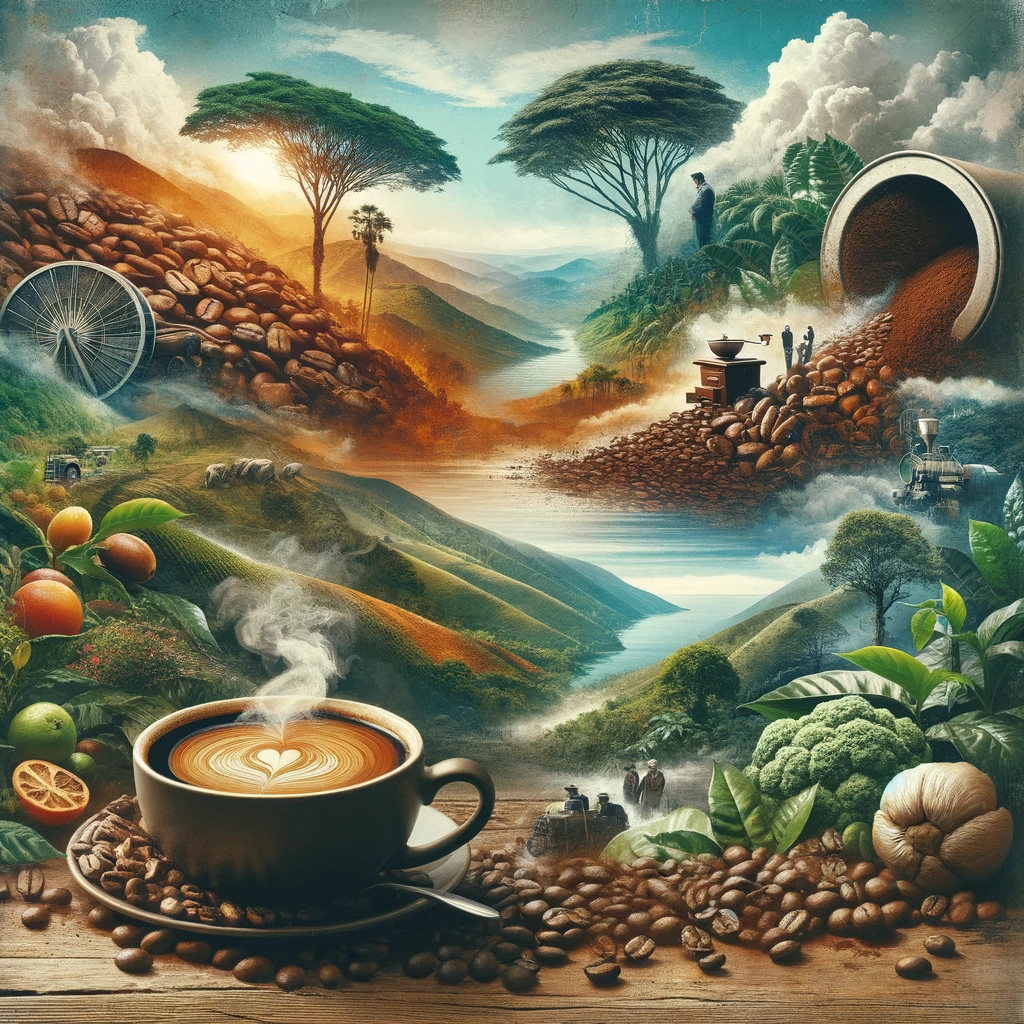
Arabica vs. Robusta: A Relaxing Guide For a Perfect Cup of Coffee
Welcome, coffee lovers! Whether you’re curling up with a good book, starting your morning, or taking a well-deserved break, there’s nothing quite like the company of a good cup of coffee. Today, we’re diving into the cozy and aromatic world of coffee beans, specifically focusing on the two giants in the coffee realm: Arabica and Robusta. If you’ve ever wondered about the difference between Arabica and Robusta or the various coffee bean types, you’re in the right place. So grab your favorite mug, pour yourself a cup, and let’s explore these fascinating beans together.
Arabica vs. Robusta
Arabica Beans: The Aromatic Sophisticate Arabica beans are the quintessence of coffee elegance, cherished for their aromatic and complex flavor profiles.
These beans have a storied history, with their roots tracing back to Ethiopia. They are predominantly grown in regions that offer the perfect balance of altitude and climate, such as Latin America, Eastern Africa, and parts of Asia.
- Origin and Cultivation: Native to Ethiopia, Arabica beans have spread across the globe, flourishing at altitudes of 600 to 2,200 meters where the conditions are ideal for their growth.
- Climate Requirements: The specific temperature range of 15 to 24°C and the need for partial shade are critical in developing the nuanced flavors that Arabica beans are known for.
- Flavor Characteristics: These beans are celebrated for their sweet, smooth, and complex flavor, with a variety that includes hints of chocolate, caramel, nuts, and fruits, making them a favorite among coffee lovers.
- Popularity and Production: Dominating over 60% of the world coffee market, Arabica beans are synonymous with quality and are considered the gold standard in the coffee industry.
Robusta Beans: The Bold Challenger Robusta beans stand in stark contrast to Arabica, embodying strength and resilience.
Originating from the harsher climates of central and western Sub-Saharan Africa, they are known for their robust nature and ability to thrive under varied environmental conditions.
- Origin and Adaptability: These beans are inherently tough, capable of growing in lower altitudes and resistant to changing climates and pests.
- Growing Conditions: Robusta’s resilience to pests and diseases makes it easier to cultivate, allowing it to flourish in a wider range of climates compared to Arabica.
- Taste Profile: With a distinctly strong, bitter, and robust flavor, Robusta beans have a higher caffeine content, contributing to their bold taste that’s often described as having grainy or rubbery overtones.
- Use in Coffee Blends: Although Robusta might not enjoy the same level of popularity as Arabica in single-origin coffee, it is invaluable in espresso blends for its rich crema and ability to enhance the overall intensity and body of the coffee.
Growing Conditions and Coffee Quality

The environment plays a crucial role in the quality and flavor profile of Arabica and Robusta beans. While Arabica finds its sanctuary in the cool, mountainous regions, Robusta thrives in the heat and humidity of lower altitudes. This difference in growing conditions contributes to the unique characteristics of each bean type, making the coffee experience wonderfully diverse.
Flavor, Aroma, and the Coffee Experience
When it comes to flavor and aroma, Arabica and Robusta couldn’t be more different. Arabica’s gentle, nuanced flavors contrast sharply with Robusta’s bold and straightforward profile. This diversity is what makes the world of coffee so rich and exciting, offering something for every palate.
Caffeine Content and Health Benefits
The caffeine content and health benefits of coffee beans, particularly Arabica and Robusta, are significant factors for coffee enthusiasts and health-conscious individuals. Here’s a more detailed look at these aspects:
Caffeine Content
-
Arabica: Contains about 1.2% to 1.5% caffeine by weight. Arabica beans are known for their smooth, complex flavor profiles, with hints of fruits and berries.
-
Robusta: Contains about 2.2% to 2.7% caffeine by weight. Robusta beans have a stronger, more bitter taste, often described as having a nutty or chocolatey quality.
The higher caffeine content in Robusta not only affects the flavor, making it more bitter and harsh, but also influences the bean’s use in the coffee industry. Robusta is commonly used in espresso blends to create a rich, deep flavor and to produce a better crema (the creamy layer on top of an espresso shot). It’s also more resilient and easier to cultivate, which makes it a popular choice for farmers.
Health Benefits
Caffeine, the main active ingredient in coffee, has been shown to have various health benefits:
-
Mental Alertness and Cognitive Function: Caffeine can improve concentration, focus, and mental alertness. It blocks the adenosine receptor in the brain, reducing feelings of tiredness.
-
Physical Performance: Caffeine increases adrenaline levels, which can enhance physical performance by mobilizing fatty acids from fat tissues and making them available for energy production.
-
Metabolism and Weight Loss: Caffeine can boost metabolic rate and increase fat burning in the short term, potentially contributing to weight loss efforts.
-
Protection Against Neurological Diseases: Regular coffee consumption has been associated with a lower risk of developing Alzheimer’s and Parkinson’s diseases.
However, it’s essential to consume caffeine in moderation. Excessive intake can lead to side effects such as insomnia, nervousness, restlessness, stomach irritation, nausea, and increased heart rate and respiration. The recommended daily limit for caffeine is up to 400 milligrams for most healthy adults, equivalent to about four cups of brewed coffee.
In summary, while both Arabica and Robusta beans offer health benefits through their caffeine content, they cater to different tastes and preferences. Arabica is favored for its smooth, delicate flavors, while Robusta is sought after for its strong taste and higher caffeine kick
The Verdict: Arabica or Robusta?
Choosing between Arabica and Robusta comes down to personal preference. Do you savor the subtle, refined flavors of Arabica, or do you crave the bold, powerful kick of Robusta? Perhaps you enjoy a blend of both, appreciating the unique qualities each has to offer. No matter your preference, exploring the diverse world of coffee is an adventure worth savoring.
Your Perfect Coffee Awaits

In the end, whether you lean towards Arabica or Robusta, the journey through the world of coffee bean types and their distinctive flavors is a rewarding one. As you sit back and relax with your perfect cup, remember that behind every sip is a story of cultivation, flavor, and tradition—a global tapestry woven together by the simple, yet profound, love for coffee.
And if you’re looking to embark on this flavorful journey with some of the finest beans, why not let Caffeine and Chills guide you? Explore our delightful selection of Arabica and Robusta beans, and find your perfect blend to relax and unwind with. After all, the best moments in life are those spent with a great cup of coffee in hand.
